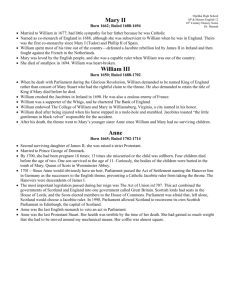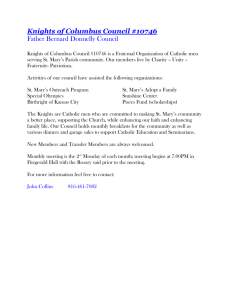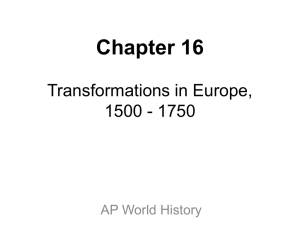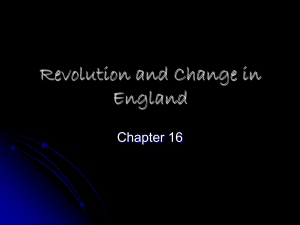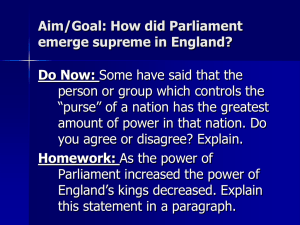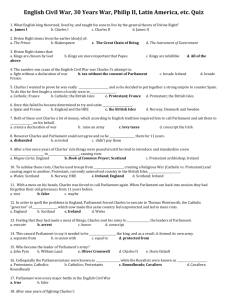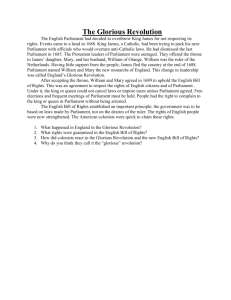England
advertisement
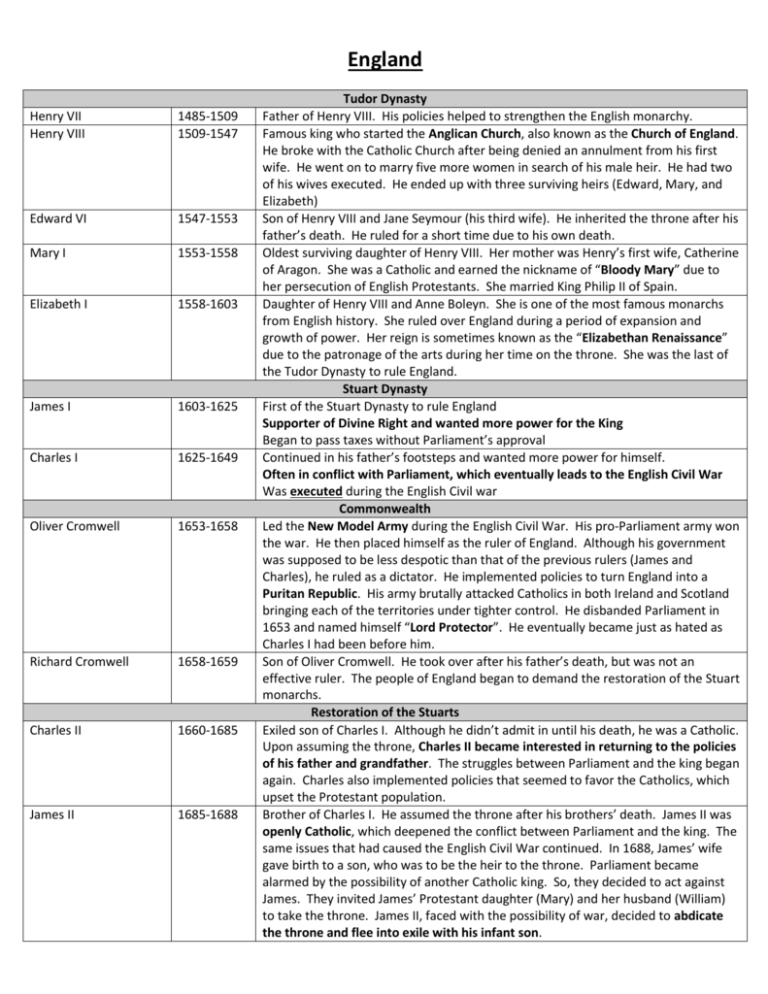
England Henry VII Henry VIII 1485-1509 1509-1547 Edward VI 1547-1553 Mary I 1553-1558 Elizabeth I 1558-1603 James I 1603-1625 Charles I 1625-1649 Oliver Cromwell 1653-1658 Richard Cromwell 1658-1659 Charles II 1660-1685 James II 1685-1688 Tudor Dynasty Father of Henry VIII. His policies helped to strengthen the English monarchy. Famous king who started the Anglican Church, also known as the Church of England. He broke with the Catholic Church after being denied an annulment from his first wife. He went on to marry five more women in search of his male heir. He had two of his wives executed. He ended up with three surviving heirs (Edward, Mary, and Elizabeth) Son of Henry VIII and Jane Seymour (his third wife). He inherited the throne after his father’s death. He ruled for a short time due to his own death. Oldest surviving daughter of Henry VIII. Her mother was Henry’s first wife, Catherine of Aragon. She was a Catholic and earned the nickname of “Bloody Mary” due to her persecution of English Protestants. She married King Philip II of Spain. Daughter of Henry VIII and Anne Boleyn. She is one of the most famous monarchs from English history. She ruled over England during a period of expansion and growth of power. Her reign is sometimes known as the “Elizabethan Renaissance” due to the patronage of the arts during her time on the throne. She was the last of the Tudor Dynasty to rule England. Stuart Dynasty First of the Stuart Dynasty to rule England Supporter of Divine Right and wanted more power for the King Began to pass taxes without Parliament’s approval Continued in his father’s footsteps and wanted more power for himself. Often in conflict with Parliament, which eventually leads to the English Civil War Was executed during the English Civil war Commonwealth Led the New Model Army during the English Civil War. His pro-Parliament army won the war. He then placed himself as the ruler of England. Although his government was supposed to be less despotic than that of the previous rulers (James and Charles), he ruled as a dictator. He implemented policies to turn England into a Puritan Republic. His army brutally attacked Catholics in both Ireland and Scotland bringing each of the territories under tighter control. He disbanded Parliament in 1653 and named himself “Lord Protector”. He eventually became just as hated as Charles I had been before him. Son of Oliver Cromwell. He took over after his father’s death, but was not an effective ruler. The people of England began to demand the restoration of the Stuart monarchs. Restoration of the Stuarts Exiled son of Charles I. Although he didn’t admit in until his death, he was a Catholic. Upon assuming the throne, Charles II became interested in returning to the policies of his father and grandfather. The struggles between Parliament and the king began again. Charles also implemented policies that seemed to favor the Catholics, which upset the Protestant population. Brother of Charles I. He assumed the throne after his brothers’ death. James II was openly Catholic, which deepened the conflict between Parliament and the king. The same issues that had caused the English Civil War continued. In 1688, James’ wife gave birth to a son, who was to be the heir to the throne. Parliament became alarmed by the possibility of another Catholic king. So, they decided to act against James. They invited James’ Protestant daughter (Mary) and her husband (William) to take the throne. James II, faced with the possibility of war, decided to abdicate the throne and flee into exile with his infant son. England William and Mary (William III Mary II) 1689-1702 Anne 1702-1714 George I 1714-1727 George II 1727-1760 George III 1760-1820 George IV William IV Victoria 1820-1830 1830-1837 1837-1901 Edward VII 1901-1910 George V Edward VIII George VI Elizabeth II 1910-1936 1936-1936 1936-1952 1952Present William and Mary took the throne of England in 1688 during the “Glorious Revolution”. William and Mary were Protestant, which made them favorable to the predominantly Protestant Parliament and population of England. As a stipulation to their rule, William and Mary signed the English Bill of Rights. In doing so, they agreed to honor the rights of Parliament and also agreed to accept limitations on their power. William and Mary did not have an heir. Upon their death, the throne passed to William’s sister-in-law, Anne. Protestant daughter of James II. She was also the sister of Mary and sister-in-law of William. She was the last of the Stuarts to rule England. England had started to be known as Great Britain. The Act of Union (passed in 1707) had united England, Scotland, and Wales into one state Despite 18 pregnancies, Anne did not have a surviving heir. After her death, the throne passed to her distant cousin, George of Hanover. House of Hanover Distant cousin of Anne (the previous queen) and the first of the Hanover family to rule England. He was a Protestant from Hanover, a territory in Germany. He was not the closest relative to Anne, but he was the closest Protestant relative. The Act of Succession (passed by Parliament in 1701) had made it illegal for a Catholic to inherit the throne of England. George I was not a popular king, largely because he preferred his German home to England, a fact that was well-known among the people. He never even learned English despite the fact that he was king of England. Son of George I and second Hanover king to rule Great Britain. Unlike his father, he did learn English, but spoke with a heavy accent. King of England during the American Revolution. He was a popular ruler among the English people largely due to his open personality. He was said to be a talker who would stop and converse with people all the time. A sense of pride and nationalism began to develop in England during his reign. House of Saxe-Coburg and Gotha House of Windsor
